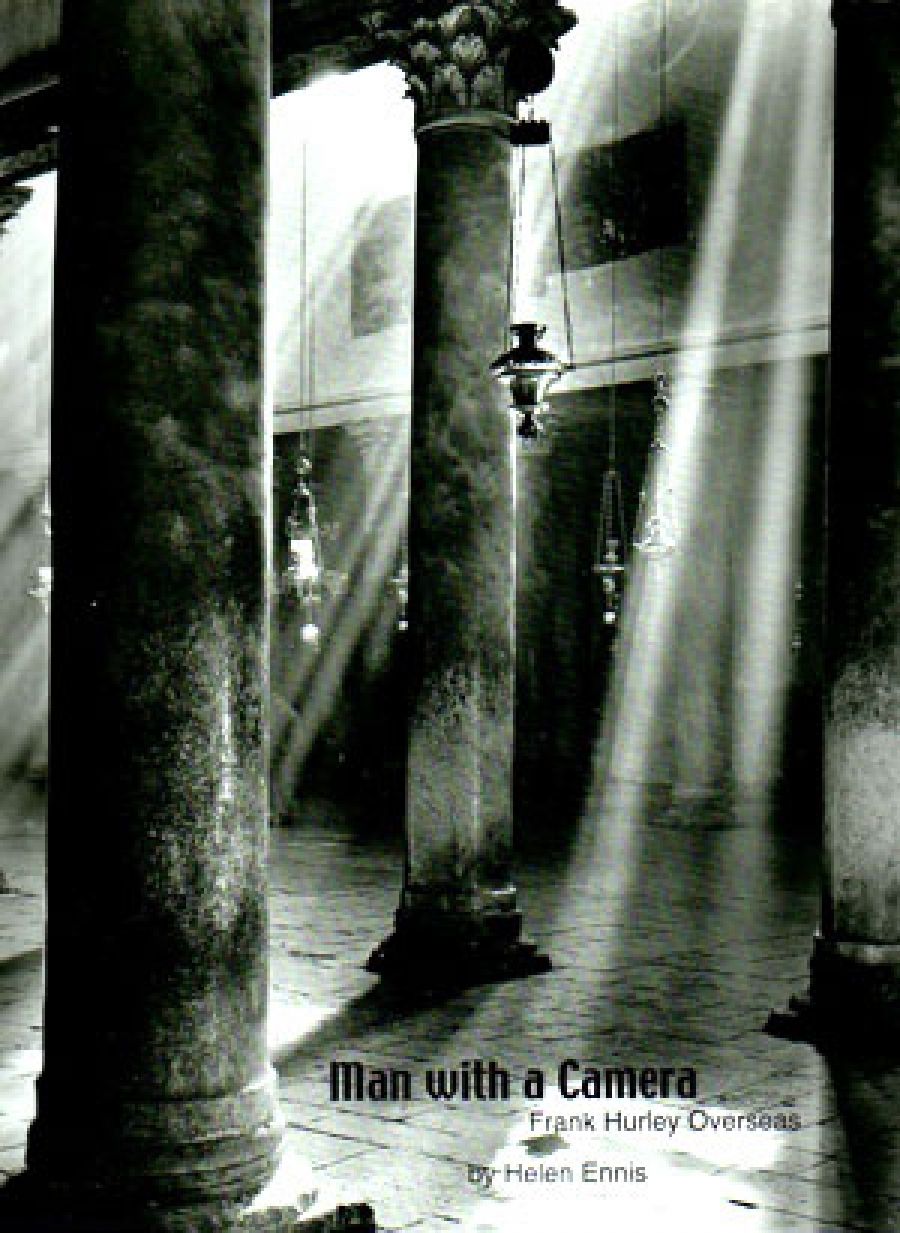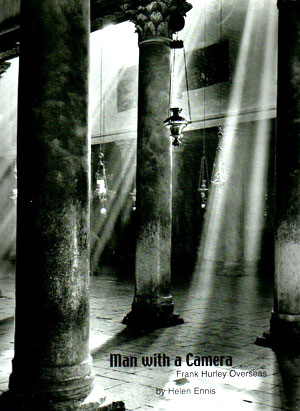
- Free Article: No
- Contents Category: Photography
- Custom Article Title: Sinbad the Photographer
- Review Article: Yes
- Article Title: Sinbad the Photographer
- Online Only: No
- Custom Highlight Text:
During a career that lasted almost sixty years, Frank Hurley (1895–1962) produced thousands of negatives and more than sixty films. He also wrote some twenty books and was an avid diarist. A number of biographies have been written on Hurley, and Helen Ennis, in Man with a Camera: Frank Hurley Overseas, makes no attempt to revisit territory covered in these earlier publications, choosing to focus on a particular aspect of Hurley’s oeuvre: the photographs he took outside Australia. She draws on the extraordinary holdings of Hurley photographs in the National Library of Australia. The book comprises more than seventy full-page images illustrating the range of Hurley’s international work. It also complements John Thompson’s Hurley’s Australia: Myth, Dream, Reality, published by the NLA in 1999.
- Book 1 Title: Man with a Camera
- Book 1 Subtitle: Frank Hurley Overseas
- Book 1 Biblio: NLA, $34.95 pb, 107 pp
- Book 1 Cover Small (400 x 600):

- Book 1 Cover (800 x 1200):

The chapters in Ennis’s book are based on the major expeditions and journeys that Hurley, an inveterate traveller, made outside Australia. The episodic nature of his international travel neatly imposes a structure on the great volume of material – photographs, films, books and diaries – that he generated.
Hurley’s time in Antarctica is the stuff of legends. As Ennis says: ‘His images of Antarctica, taken on the Mawson and Shackleton Expeditions, have so colonised the popular imagination that they are now the primary means by which the expeditions are visualised.’ Hurley made a total of six trips to Antarctica between 1911 and 1931, the best-known being the ill-fated 1914–16 Imperial Trans-Antarctic Expedition, led by Shackleton. Hurley’s hundreds of photographs (twenty-six of which are included in this book) and numerous films helped shape an understanding of the continent in the early part of the twentieth century.
In 1916, within months of returning to Australia after almost two years lost in the Antarctic, Hurley was appointed Official War Photographer to the AIF and was sent to the battlefields of France. Previously praised for his judicious use of composite negatives, Hurley, in France, ran foul of Charles Bean, the Official War Correspondent and Historian. Bean regarded Hurley’s photographs as fakes. Ennis runs a convincing counterargument, and the selected images powerfully support her thesis.
In contrast to the photographs produced by Hurley on previous trips, the ones in Papua New Guinea include a significant number of portraits. In the early 1920s, Hurley was included in two exploratory expeditions into the PNG Highlands, a region then largely unknown to Europeans. Ennis explains that these portraits have little to do with their subjects, who have no individual autonomy and no role in the photographic exchange. The photographs are skilful images of an exotic ‘other’ produced for the consumption of armchair travellers seventy years ago. The ongoing complexity of subsequent readings of these images is articulated by Ennis in her discussion of later screenings of Hurley’s film from this period, Pearls and Savages (1923).
Hurley’s most extensive journey was to the Middle East, from 1940 to 1946. It was a time he himself described as ‘combining the glamour of Marco Polo, the adventures of Sinbad the sailor’. His official role, at the Department of Information, was to photograph and film political and military figures in the region. As with his previous military roles, there was conflict with his colleagues. This time, however, he was criticised not for his radical approach to the use of photography, but rather for being old-fashioned and out of step with the modern world. Extracts from letters and diaries are put to best use in this chapter. Hurley’s musings and reflections on historical glories sound pompous when contrasted with the views of younger, more dynamic photographers such as Damien Parer.
While not seeking to write a biography of Hurley, Ennis has revealed something of his nature in her analysis of his life’s work. He emerges as a somewhat remote and emotionally distant man, an aspect of his personality that he himself acknowledged in his diaries. His family is notably absent; obviously, he was absent from it. Hurley, above all, was a showman, a storyteller who brought the exotic and frightening to an avid public.
Man with a Camera makes an insightful and entertaining contribution to the literature on this illustrious Australian photographer. Ennis has made full use of the breadth of material at the National Library, and has thoughtfully combined both iconic and less familiar photographs. The integration of primary source material throughout the text, particularly Hurley’s own diary accounts, provides a fascinating insight into the man and his times. While thoroughly annotated, the publication could perhaps have been enhanced by the inclusion of an extensive bibliography, including websites.


Comments powered by CComment